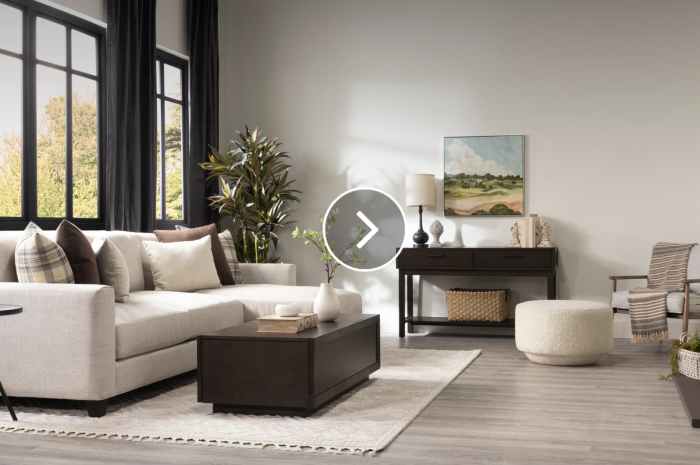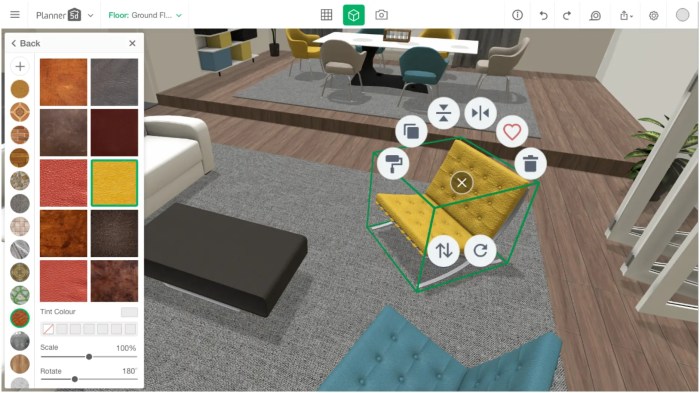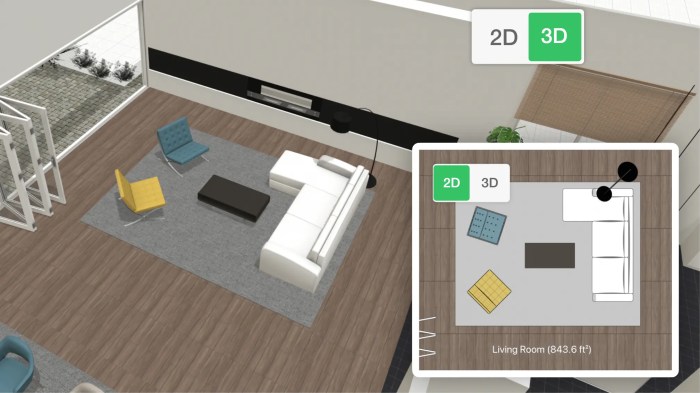Embark on a journey into the world of room design with our comprehensive guide. Discover the artistry and expertise that room designers bring to transform living spaces into stunning masterpieces.
Explore the key aspects of room designing, from the qualities of a good room designer to the tools and software they use, all the way to trend forecasting and the delicate balance between functionality and aesthetics.
Introduction to Room Designers
A room designer is a professional who specializes in creating functional and aesthetically pleasing spaces. They work closely with clients to understand their needs and preferences, and then develop design concepts to transform ordinary rooms into extraordinary living spaces.
Hiring a professional room designer is important because they have the expertise and experience to bring your vision to life. They can provide valuable insights, suggest innovative ideas, and help you avoid costly mistakes. Their attention to detail and knowledge of design principles can make a significant difference in the overall look and feel of your home.
Examples of How Room Designers Enhance Living Spaces
- Space Optimization: Room designers are skilled at maximizing the use of space, ensuring that every corner is utilized efficiently. They can recommend furniture arrangements, storage solutions, and layout designs that optimize the functionality of the room.
- Color Coordination: Room designers have a keen eye for color coordination and can create harmonious color schemes that enhance the overall ambiance of the room. They can recommend paint colors, fabric choices, and decorative accents that complement each other and create a cohesive look.
- Personalization: Room designers work closely with clients to understand their personal style and preferences. They can incorporate meaningful elements, family heirlooms, and sentimental pieces into the design to create a space that feels uniquely yours.
- Emphasis on Details: Room designers pay attention to every detail, from the placement of artwork to the selection of lighting fixtures. Their meticulous approach ensures that every element in the room is thoughtfully considered and contributes to the overall design aesthetic.
Qualities of a Good Room Designer

Room designing is a creative process that requires a specific set of skills and qualities to be successful. A good room designer possesses a combination of technical expertise, creativity, and attention to detail to bring their vision to life.
Key Skills for a Successful Room Designer
- Strong sense of aesthetics and design principles
- Excellent spatial awareness and ability to visualize concepts
- Proficiency in using design software and tools
- Good communication and collaboration skills to work with clients and other professionals
- Knowledge of current trends and materials in interior design
Importance of Creativity in Room Designing
Creativity is at the heart of room designing as it allows designers to think outside the box and come up with innovative solutions. Creative thinking helps in creating unique and personalized spaces that reflect the client's style and preferences.
Role of Attention to Detail in Room Designing
Attention to detail is crucial in room designing as it ensures that every element in the space is carefully considered and executed. From selecting the right colors and textures to placing furniture and accessories, paying attention to detail leads to a cohesive and well-designed room.
Room Designer’s Process

Room designers follow a systematic process to create functional and aesthetically pleasing spaces for their clients. This process typically involves several key steps that help them understand their clients' needs and preferences, and translate them into a well-designed room.
Assessing Clients’ Needs and Preferences
Room designers start by conducting thorough interviews with their clients to understand their lifestyle, tastes, and specific requirements for the space. By asking targeted questions and actively listening to their clients, designers can gather valuable information that will guide the rest of the design process.
- Identifying the client's preferred style, color palette, and functional requirements.
- Taking into account any specific design challenges or constraints in the space.
- Discussing budget considerations and any special requests from the client.
Creating Mood Boards for Inspiration
One effective way for room designers to communicate their design ideas and concepts to clients is by creating mood boards. These visual collages bring together images, textures, colors, and materials that capture the desired look and feel of the room.
- Curating images of furniture, fabrics, and accessories that align with the client's style preferences.
- Exploring different color schemes and patterns to evoke the desired mood in the space.
- Presenting material samples and finishes to help clients visualize the final design concept.
Room Designing Tools and Software
Room designers utilize a variety of tools and software to assist them in the planning and visualization of interior spaces. These tools enhance efficiency, accuracy, and creativity in the design process.
Popular Tools Used by Room Designers:
- AutoCAD: A widely used software for drafting and design, allowing designers to create precise floor plans and 3D models.
- SketchUp: Known for its user-friendly interface, SketchUp enables designers to easily create and visualize 3D designs.
- Adobe Photoshop: Used for editing images and creating mood boards to communicate design concepts effectively.
Benefits of Using Software for Room Designing:
- Enhanced Visualization: Software tools enable designers to create realistic 3D renderings, helping clients better understand the final design.
- Efficient Planning: Room designing software allows for quick iterations and adjustments to layouts, saving time in the design process.
- Collaboration: Design software facilitates collaboration between designers, clients, and other stakeholders, improving communication and decision-making.
Technology’s Impact on the Room Designing Industry:
Advancements in technology have revolutionized the room designing industry, offering new possibilities and efficiencies in the design process. From virtual reality simulations to augmented reality apps, designers now have innovative tools to bring their ideas to life and provide immersive experiences for clients.
Trend Forecasting in Room Design
Staying updated on the latest design trends is crucial for room designers to ensure their work remains fresh, modern, and appealing to clients. By incorporating these trends into their designs, designers can create spaces that are not only aesthetically pleasing but also reflective of current styles and preferences.
Importance of Trend Forecasting
Keeping up with design trends allows room designers to provide clients with spaces that feel current and relevant. It also helps them showcase their creativity and ability to adapt to evolving styles in the industry.
How Designers Incorporate Trends
- Researching popular design publications, websites, and social media platforms to stay informed about upcoming trends.
- Attending design exhibitions, trade shows, and conferences to gain insights into new products and emerging styles.
- Collaborating with other designers and industry professionals to exchange ideas and stay updated on the latest trends.
Examples of Current Trends
- Biophilic Design: Integrating natural elements like plants, natural light, and organic materials into interior spaces.
- Minimalism: Embracing simplicity, clean lines, and a clutter-free aesthetic in room design.
- Sustainable Design: Using eco-friendly materials and practices to create environmentally conscious spaces.
Balancing Functionality and Aesthetics

When it comes to room design, striking a balance between functionality and aesthetics is crucial for creating a space that not only looks good but also serves its purpose effectively. A room designer must consider both aspects to ensure that the final design is not only visually appealing but also practical and usable.
Significance of Balancing Functionality and Aesthetics
Functionality and aesthetics go hand in hand in room design. A space that is beautifully designed but lacks functionality may not be practical for daily use, while a highly functional space that lacks aesthetic appeal may not be inviting or pleasant to be in.
Balancing these two elements ensures that the room is not only visually pleasing but also serves its intended purpose effectively.
How Room Designers Prioritize Client Needs
- Room designers prioritize client needs by first understanding the client's lifestyle, preferences, and requirements for the space.
- They then work to incorporate these needs into the design while ensuring that the space remains visually appealing and cohesive.
- Communication with the client is key to understanding their priorities and making informed design decisions that meet both functional and aesthetic requirements.
Functionality Enhancing Room Design
- Multi-functional furniture pieces can maximize space and serve multiple purposes, enhancing the functionality of the room.
- Effective storage solutions can help keep the space organized and clutter-free, contributing to both the aesthetics and functionality of the room.
- Proper lighting design not only enhances the ambiance of the room but also serves functional purposes like task lighting and accentuating key features.
Ending Remarks
Unveil the secrets of room design and witness how professionals blend creativity, functionality, and style to create spaces that resonate with individuality and charm. This guide is your key to unlocking the potential of every room in your home.
Questions and Answers
What makes hiring a professional room designer important?
Hiring a professional room designer ensures that your space is expertly curated to reflect your style and needs, elevating your living environment.
How do room designers incorporate current trends into their designs?
Room designers stay updated on the latest trends and seamlessly integrate them into their designs through color schemes, furniture choices, and decorative elements.
What role does technology play in room designing?
Technology has revolutionized room designing by offering advanced tools and software that aid in planning, visualization, and creating innovative design solutions.













